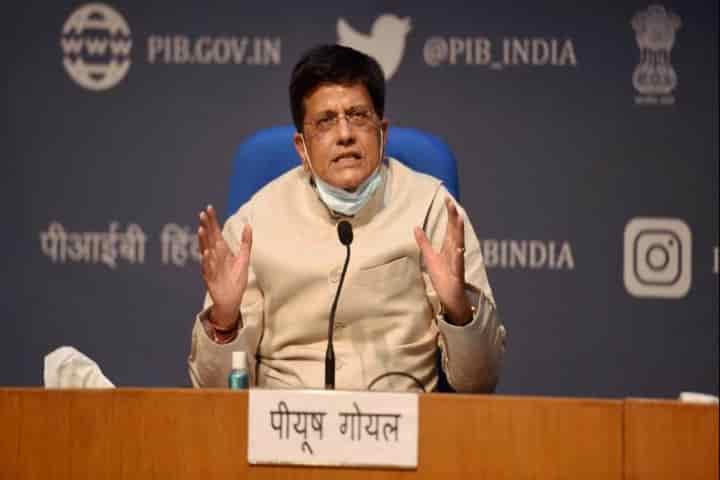The union cabinet on Wednesday approved a Rs 4,500 crore scheme to provide production-linked incentives for the manufacturing of high-efficiency solar panels, Commerce and Industry Minister Piyush Goyal said.
He said that this decision will add 10,000 MW capacity of integrated solar PV manufacturing plants and bring direct investment of around Rs 17,200 crore in solar panel manufacturing.
The PLI scheme is likely to create direct employment for around 30,000 people and indirect employment for 1.2 lakh, according to the government.
The government is giving a big push to indigenous manufacturing of solar power equipment as part of the Prime Minister’s Aatamnirbhar Bharat campaign. Almost 75% of India's solar power capacity is built on Chinese solar cells, and modules.
The total value of solar photovoltaic cell imports stood at $1.53 billion for the April-December period of the 2019-20 financial year. Of this $1.2 billion worth imports came from China.
The share of solar energy in India’s power generation could equal coal-fired output by 2040, driven by falling renewable tariffs and a government push to increase green energy use, the International Energy Agency (IEA) said in a recent report,
“Solar power is set for explosive growth in India, matching coal’s share in the Indian power generation mix within two decades,” the IEA said in its India Energy Outlook 2021 released in February.
Coal currently dominates India’s electricity sector, accounting for over 70% of overall generation with only about 4% produced through solar. India was on track to exceed its commitments as a part of the 2015 Paris agreement, the IEA said.
“This dramatic turnaround is driven by India’s policy ambitions, notably the target to reach 450 GW of renewable capacity by 2030, and the extraordinary cost‐competitiveness of solar,” the agency said.
India has the potential to become a world leader in battery storage, the IEA said, adding the country could add 140-200 GW capacity of battery by 2040.
Electricity consumption is expected to outpace overall energy demand by 2040, mainly due to higher use of air conditioners, the IEA said.
“Battery storage is particularly well suited to the short‐run flexibility that India needs to align its solar‐led generation peak in the middle of the day with the country’s early evening peak in demand,” the IEA said.




















